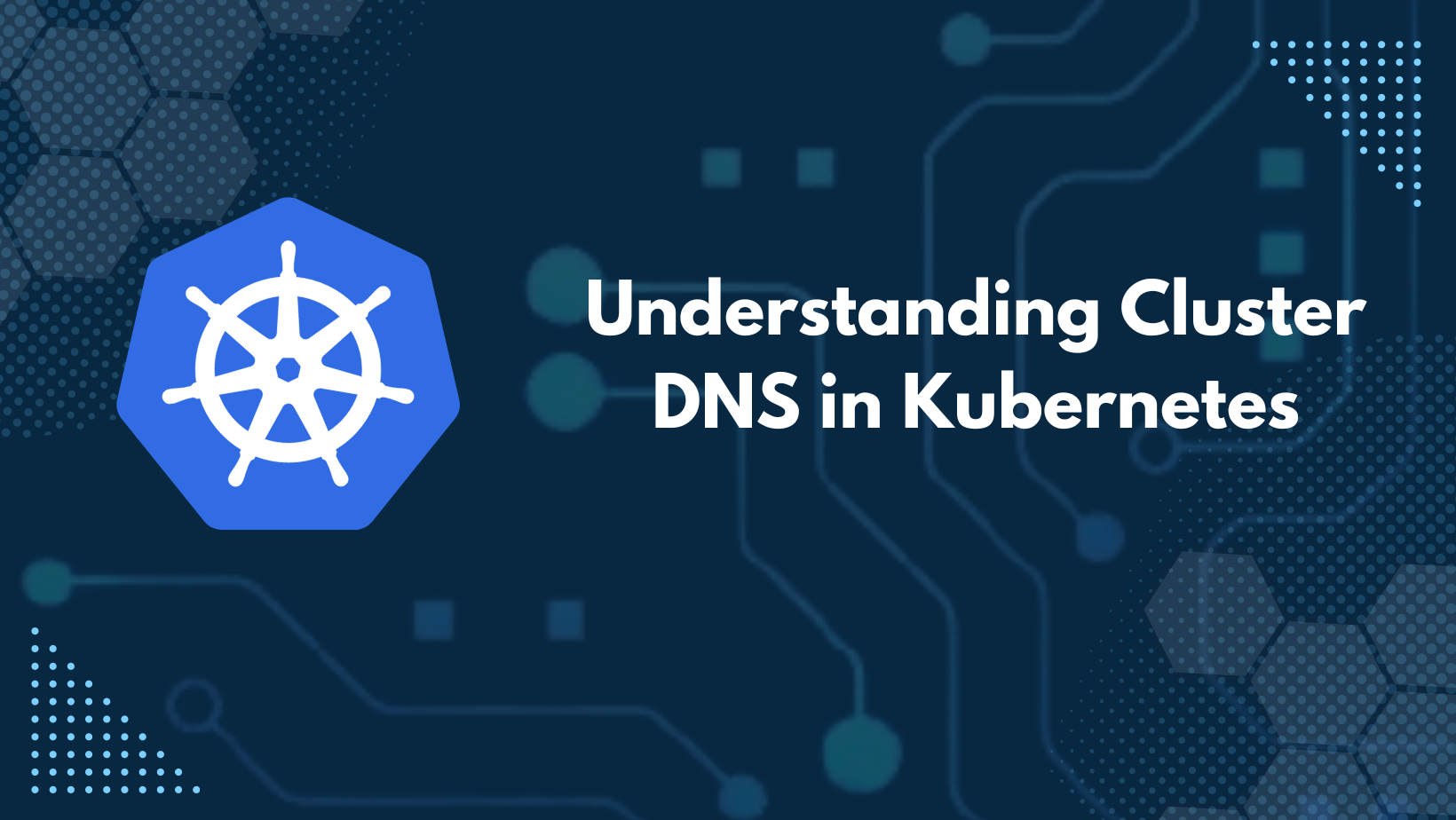Understanding Cluster DNS in Kubernetes
 Ashutosh Mahajan
Ashutosh MahajanTable of contents

🗼Introduction
DNS (Domain Name System) is a fundamental component of any networking setup, including Kubernetes clusters. Kubernetes deploys a built-in DNS server by default, which is essential for service discovery within the cluster. This blog will provide an overview of how DNS functions in Kubernetes, how CoreDNS operates, and how services can be accessed using DNS records.
🗼DNS in Kubernetes
When you set up a Kubernetes cluster, a built-in DNS server is deployed automatically. This DNS server plays a crucial role in the internal communication between different services and pods within the cluster.
Service Name Resolution
Whenever a service is created in Kubernetes, the DNS service creates a corresponding DNS record for that service. This DNS record essentially maps the service name to its IP address, allowing other services and pods to access it using its name. This abstraction simplifies the communication process, as you do not need to remember or manage IP addresses manually.
You can access a service using a simple HTTP request to its name:
curl http://<service-name>
Accessing Services in Different Namespaces
In Kubernetes, namespaces provide a way to divide cluster resources between multiple users. If you need to access a service that resides in a different namespace, you can do so by specifying the namespace along with the service name:
curl http://<service-name>.<namespace>
🗼CoreDNS in Kubernetes
CoreDNS is the default DNS server in Kubernetes. It is deployed as a pod within the kube-system namespace. The CoreDNS pod runs the CoreDNS executable, which is configured using the Corefile located at
/etc/coredns/CoreFile.
CoreDNS Configuration
The CoreDNS configuration in the Corefile specifies how DNS queries should be handled. Each time a pod or service is created, CoreDNS updates its records to include the new pod or service, ensuring that DNS resolution is up-to-date.
Here's a high-level overview of how CoreDNS works:
Deployment: CoreDNS is deployed as a pod in the
kube-systemnamespace.Configuration: The CoreDNS executable reads its configuration from the
Corefile.Record Management: When a new pod or service is created, CoreDNS automatically adds a corresponding DNS record.
Service Discovery: Services and pods can resolve each other's names to IP addresses using the DNS records managed by CoreDNS.
🗼Conclusion
DNS is a critical service in a Kubernetes cluster, enabling seamless communication between services and pods. Kubernetes simplifies DNS management by deploying a built-in DNS server and using CoreDNS for efficient DNS resolution. By understanding how to access services using DNS names and how CoreDNS operates, you can effectively manage service discovery and communication within your Kubernetes cluster.
Subscribe to my newsletter
Read articles from Ashutosh Mahajan directly inside your inbox. Subscribe to the newsletter, and don't miss out.
Written by

Ashutosh Mahajan
Ashutosh Mahajan
Proficient in variety of DevOps technologies, including AWS, Linux, Shell Scripting, Python, Docker, Terraform, Jenkins and Computer Networking. They have strong ability to troubleshoot and resolve issues and are consistently motivated to expand their knowledge and skills through expantion of new technologies.